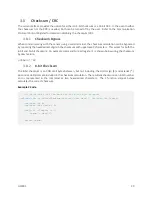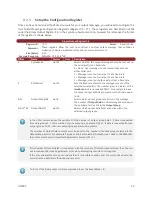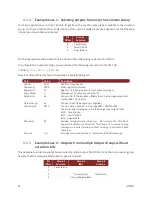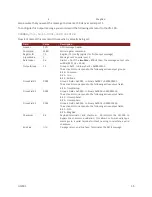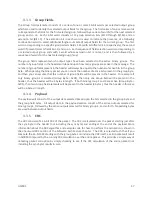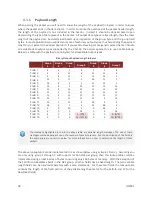
UM001
25
Indoor Heading Mode Disadvantages
Measurement repeatability may be worse than Relative Mode during periods when the VPE
corrects for known errors in absolute heading.
Overview of Heading Modes
A summary of the different types of disturbances handled by each magnetic mode is summarized in the
table below.
Capabilities
Absolute
Heading
Relative
Heading
Indoor
Mode
Capabilities
Handle high frequency magnetic
disturbances greater than 1Hz?
Yes
Yes
Yes
Handle high frequency magnetic
disturbances greater than 1Hz?
Handle constant disturbances lasting
less than a few seconds?
Yes
Yes
Yes
Handle
constant
disturbances
lasting less than a few seconds?
Handle constant disturbances lasting
longer than a few seconds?
No
Yes
Yes
Handle
constant
disturbances
lasting longer than a few seconds?
3.4.4
VPE Adaptive Filtering and Tuning Settings
The VPE actively employs both adaptive filtering and adaptive tuning techniques to enhance performance
in conditions of dynamic motion and magnetic and acceleration disturbances. The VPE provides the ability
to modify the amount of adaptive filtering and tuning applied on both the magnetometer and the
accelerometer. In many cases the VPE can be used as is without any need to adjust these settings. For
some applications higher performance can be obtained by adjusting the amount of adaptive filtering and
tuning performed on the inputs. For both the magnetometer and the accelerometer the following settings
are provided.
Static Measurement Uncertainty
The static gain adjusts the level of uncertainty associated with either the magnetic or acceleration
measurement when no disturbances are present. The level of uncertainty associated with the
measurement will directly influence the accuracy of the estimated attitude solution. The level of
uncertainty in the measurement will also determine how quickly the attitude filter will correct for errors
in the attitude when they are observed. The lower the uncertainty, the quicker it will correct for observed
errors.
This parameter can be adjusted from 0 to 10.
Zero places no confidence (or infinite uncertainty) in the sensor, thus eliminating its effect on
the attitude solution.
Ten places full confidence (minimal uncertainty) in the sensor and assume that its measurements
are always 100% correct.
Adaptive Tuning Gain
The adaptive tuning stage of the VPE monitors both the magnetic and acceleration measurements over
an extended period of time to estimate the time-varying level of uncertainty in the measurement. The
adaptive tuning gain directly scales either up or down this calculated uncertainty.
This parameter can be adjusted from 0 to 10.



















